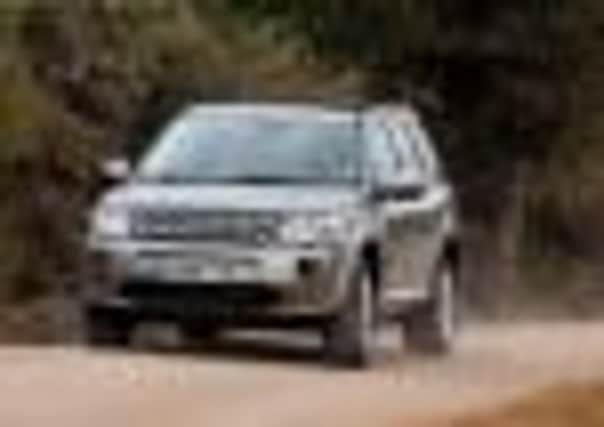Go for the bigger engine


The last vehicle I tried from the Land Rover Freelander stable was the stop/start version, called the Freelander TD4e.
Environmental reputations are all the rage nowadays and not wanting to get left behind, Land Rover decided to jump on the green bandwagon using their baby Rangy as the platform.
Advertisement
Hide AdAdvertisement
Hide AdIn short, they made a few minor tweaks to the standard 4x4 and cleverly produced a car which produced under 180g/km of those dreaded CO2 emissions (down a full eight per cent) and can achieve 41mpg... while still being a hoot to drive.
But then I was privileged to try the full fat version, the Freelander SD4. Would it change my view of the Freelander? Time to find out.
In new guise, the Freelander looks very similar to the older sister it replaces – only eagle-eyed officianados will spot the badging on the back that reads Freelander 2 TD4.e (on the version I had least) – this latest iteration does away with the ‘e’ bit; and that’s it.
It’s a bit of a baby Range Rover still, with its high bonnet, new mesh grille, new bumper assembly, new front fog lamp bezels, square facets and chunky looks, not forgetting you can have it with either 18in 19in alloy wheels.
Advertisement
Hide AdDown the sides it retains the four doors for ease of access, cute side vents, and lots of glass space, but instead of chunky rubber it has tyres that soak up all the bumps.
Advertisement
Hide AdAt the rear end it’s just stock really, and that’ll please many prospective buyers. They still crave the look it has had in ‘2’ guise, and that I guess is something that will never be radically changed.
On the road, the 2e is the most fuekl efficient car Land Rover has ever built. Introducing a stop/start system means it’s the world’s first SUV to feature such a system, and it’s making ground-breaking claims to boot.
Never has it been a bad time for Land Rover to roll out this sort of technology, following on from all the hefty V8 petrol’s with superchargers and high-output diesel engines and the like that make environmentalists shudder. Instead, they now have an alternative to try out and believe me, it works.
Advertisement
Hide AdThe four-cylinder 2.2-litre diesel engine in my DS4 s new propels it to 118mph, with o-60mph taking 8.4 seconds.
This acceleration makes much better reading over tghe somewhat letheragic older siblings, and all down to the hike in clout – now 190bhp delivered through an automtic gearbox that suits the car really well.
Advertisement
Hide AdIt is also more fuel efficient as a result, and one can achieve a 14 per cent improvement in emissions, now down to 185g/km, and a matching fuel economy improvement, delivering 40.4 miles per gallon.
Everything else is familiar to Freelander 2 users, things like the gear change, a six-speed manual on the 150bhp version, plus the steering, damper settings, suspension and the brakes are all retained. But go for the more powerful engine, as my test car had, then am automatic ‘box comes as standard.
Advertisement
Hide AdLand Rover also offer customers a 2WD derivative now, called the Freelander 2 e D4, and is the most fuel efficient Land Rover ever produced, achieving 47 to the gallon.
The interior is the usual mix of fine high quality materials, well bolstered seats with armrests, lots of cubby holes, plenty of leg, shoulder and headroom and space for three adults plus the luggage in the back. My test car had the optional ‘Premium pack’ which means revised instrument dials, four new seat styles that includes beautiful Windsor leather upholstery, an 8/6 way electric seat, plus premium carpet mats and covered centre stowage.
How much then for this Freelander 2? Well, it’ll cost you from just £21,695 up to £35,510 dependent upon which model and specification you want.
Advertisement
Hide AdIt’s probably a good bet to go for the more powerful engine in the Freelander, as this is instantly noticeable on the road. Interestingly, sales of the stop/start versions are healthy, and It’ll be interesting further still to see how sales will do in 2011 of the 2WD derivative.